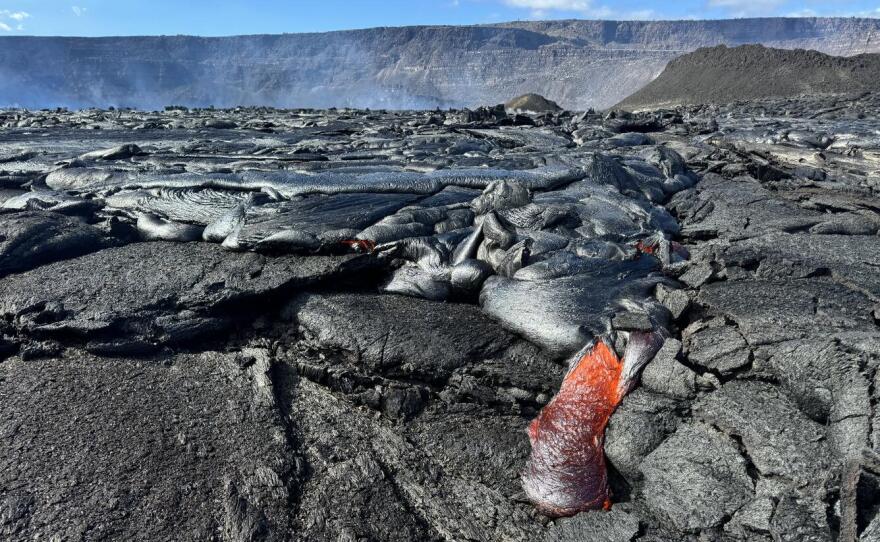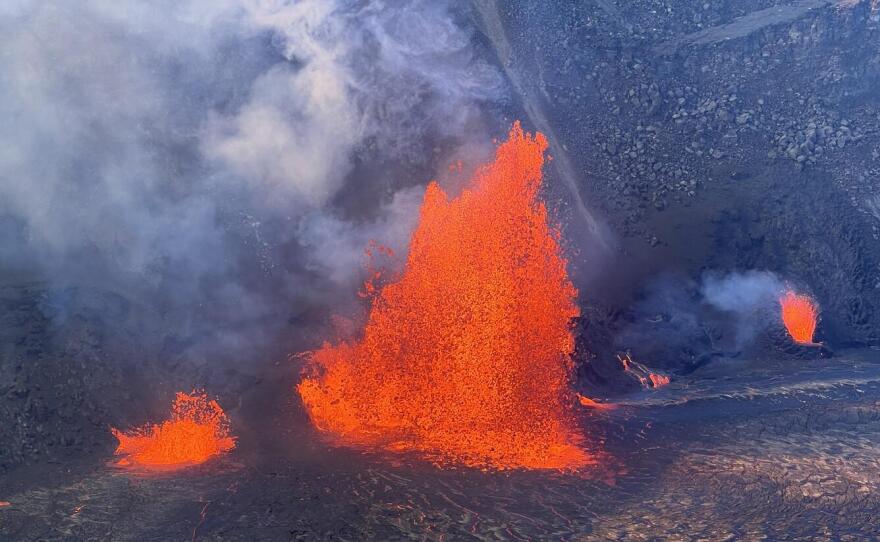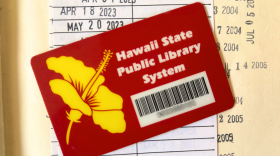It's been a week since Kīlauea rumbled back into the headlines. The on-again-off-again eruption has delighted parkgoers.
As visitors head to the park around the New Year's holiday to see the volcanic fireworks, the National Park Service wants to ensure everyone stays safe.
Scientists at the U.S. Geological Survey's Hawaiian Volcano Observatory are monitoring seismic activity and what that might bring in the days to come.
January marks Volcano Awareness Month — and this latest eruptive phase is putting on an early show. Lava activity has been confined to Halemaʻumaʻu Crater.
Jessica Ferracane, who is with Hawaiʻi Volcanoes National Park, shared that a lot of people are visiting the park right now.
"We always urge people, this is our mantra with every eruption, is to plan ahead — know what you're getting into, realize that we have really crowded times right now in the park. The park is open 24 hours a day, and these overlooks are extremely crowded," she said.
She said people should visit the park after 9 p.m. or before sunrise for a better experience.
"We're a 24-hour park, so people can come during these off-hours and avoid the crowds. People start parking on the road or in unsafe, unwise areas. So that is always a concern. That's why we're really urging people to come during these unconventional hours and take advantage of the park being open around the clock," Ferracane said.

With the uptick in visitors, the park has called in all the staff they can — along with staff from other parks.
"What we're doing mostly is doing parking because there is such a demand to come in between the hours of 5 p.m. to say, 8 p.m.," she said. "Other rangers are patrolling to keep people safe."
The state Department of Health put out a statement last week advising the public to be aware of the air quality at the park.
"We have light winds this morning, which means that big plume, which has sulfur dioxide and carbon dioxide in it, that has the possibility of blowing over overlooks in the park and those gasses are toxic — not just to everybody but especially to people that have heart and respiratory issues and pregnant women and young children," Ferracane told HPR.
She also encouraged people to share in the splendor of these powerful events.
"Try to listen — the sounds of the lava just gnashing within the lava lake. It's stupendous. If you can just be quiet for a little bit and listen to that sound, it'll definitely give chicken skin to you," she said.
The park urges visitors to check its website for updates before arriving. For more information, click here.

This interview aired on The Conversation on Dec. 30, 2024. The Conversation airs weekdays at 11 a.m. on HPR-1. Tori DeJournett adapted this story for the web.









